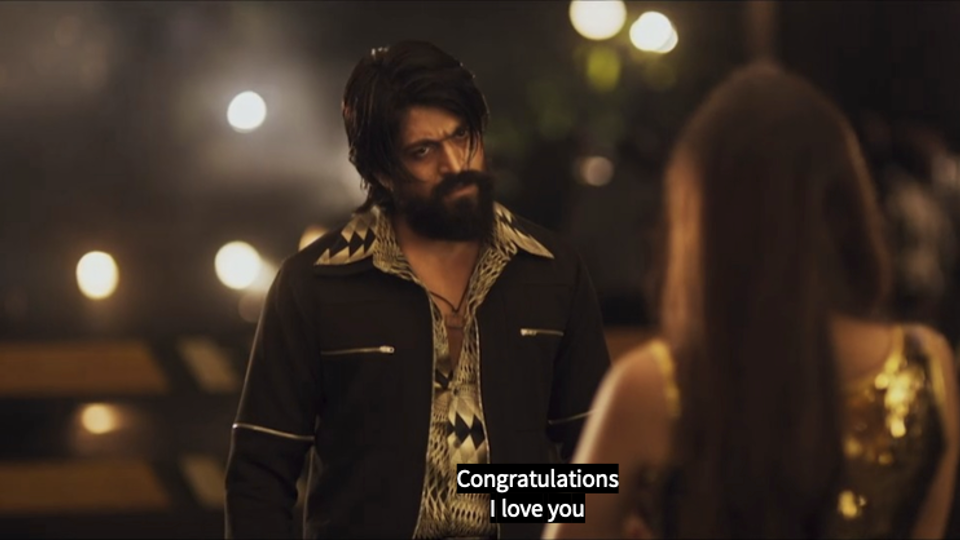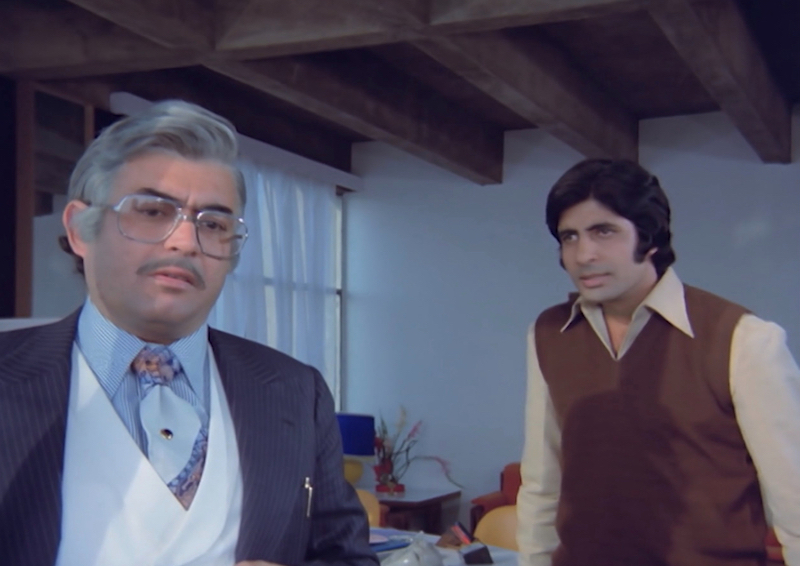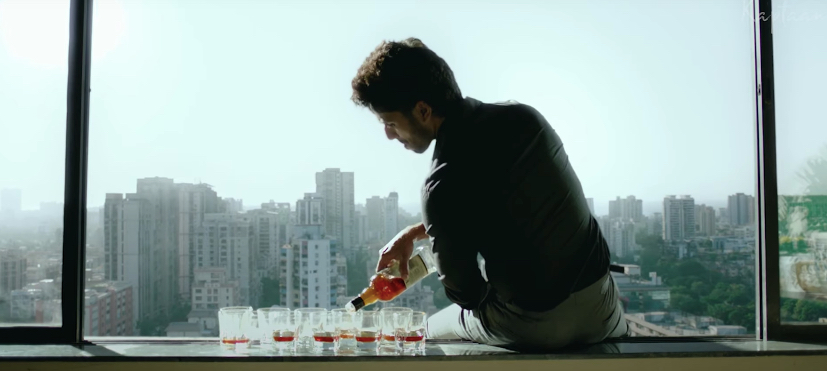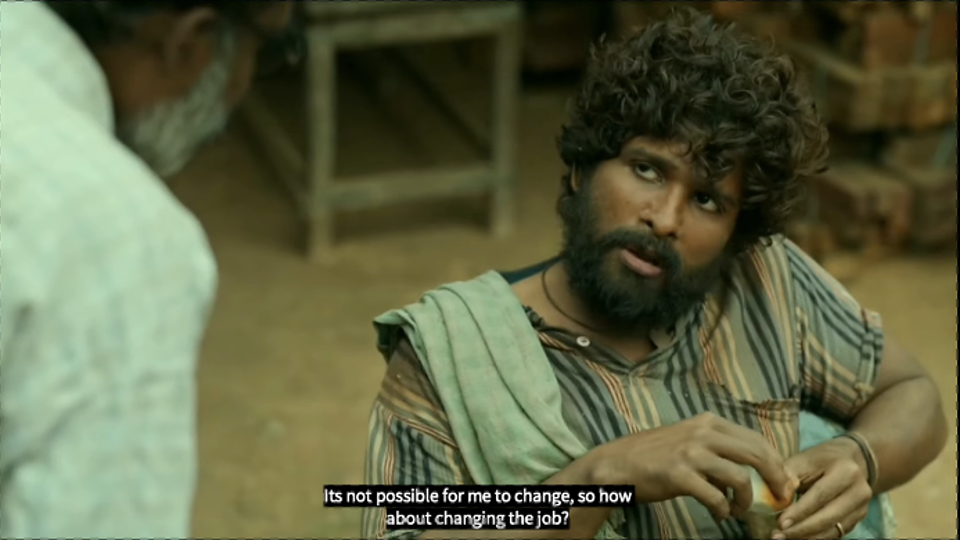


By Shreya Ramakrishnan, Abinash Gupta
It is impossible to talk about Hindi cinema from the 1970s without a reference to the ‘Angry Young Man’. Amitabh Bachchan achieved remarkable success in a series of films where he played this archetype. The character, which often went by the name Vijay, was a brooding, rebellious hero who had his reasons to take on the institutions running the country, because he felt the system had failed him. In Deewaar (1975), he even confronts God, in the iconic ‘Aaj khush toh bahut hoge tum…’ scene.
Almost 50 years later, a modern-day variant of the ‘Angry Young Man’ (AYM) is gaining favour with young audiences in India. At least four iconic characters from the recent past – Pushpa (titular), Rocky (K.G.F), Arjun Reddy/ Kabir Singh (titular) and Harshad Mehta (Scam 1992) wear the AYM persona on their sleeves. It may not be a matter of coincidence that all four properties have been runaway hits. The first three broke box office records, while Scam 1992 remains the second most-liked web-series (based on Ormax Power Rating) in India till date (after The Family Man S2). The success of these properties warrants a deeper analysis of their protagonists, and why they resonated with audiences in such a resounding way.
We live in times of instant gratification and easy access. There is an increasing sense of entitlement and impatience among the urban Indian youth today. This idea is the other end of ‘scarcity’, which drove the AYM persona in the pre-liberalization era. Many urban young audiences of today were born post the economic reforms that enabled liberalization in 1991. Add to that the digital explosion over the last decade, and ‘abundance’, and not ‘scarcity’, is the governing social paradigm through which young urban India looks at life.
Similarly, the characters named above are obsessed with grabbing what they desire. In what can be called as a glorification of the fast-paced ‘hustle’ culture, this obsession is understood by many audiences as ‘passion.’ Rocky’s unbridled desire to become feared and powerful allows him to murder rival smugglers and gangsters with little remorse. Even outside the world of crime, when he meets Reena, he instantly sees her as his ‘property’, and claims her as his own, without a second thought.

Kabir Singh is obsessed with Preeti. She is the object of his desire, which, for him, means that she can never be anyone else’s. When he can’t ‘get’ her, he spirals into a world of drugs and alcohol to manage the pain. Harshad Mehta may not be from the same hypermasculine breed as Rocky or Kabir, but he has the same thirst to reach the top, a voracious appetite for fame and glamour, a desire to become a larger-than-life figure, the urge to leave a legacy.

These passionate young men also have simmering anger within them. Anger created from deep vulnerabilities and scars formed by oppression and injustice they faced. Harshad Mehta spent his early life in an unremarkable middle-class family that did not believe in dreaming big. Meanwhile, everyone around him bettered their fortunes with successful businesses or investing in stocks.
Pushpa grew up in a village oppressed by the wealthy, and isn’t allowed the dignity of a surname. Rocky grew up in poverty, without a father figure, and lost his mother at a very young age. These characters believe they are victims of a system that was always unfair to them, and seek revenge and justice. To that extent, they are very much like the AYM archetype that Bachchan personified.
In a disparate society like ours, a vast majority is battling systemic oppression of some form or the other. For some, it could be caste-driven. For others, it could be wealth-driven. And for several women, it is gender-driven. Whatever the driver may be, it is easy to believe that life has dealt us the wrong cards. The audience, thus, finds something to relate with, in Pushpa and Rocky’s frustration. Harshad’s ability to climb the social ladder despite all odds becomes inspiring. Kabir Singh's willingness to fight against family and society for Preeti reflects a determination they wish they had within themselves. The anger and obsession of these characters leads to them being perceived as passionate mavericks who don’t fear revolting against a strong system.
The characters portrayed by Amitabh Bachchan had a similar anger that stemmed from the economic scarcity. Bachchan’s angry young man thus became the voice of the poor and the wronged of that decade (1970s). The most-effective portrayals came in Deewaar (1975) and Trishul (1978). Deewaar’s Vijay had an uneasy childhood, and had to live with a permanent tattoo on his arm, that said “Mera baap chor hai”. Trishul’s Vijay is an ‘illegitimate’ child who grows up to realize that his father left his mother to marry a woman from a rich family, and vows to avenge the injustice meted out to his mother, by destroying his father’s flourishing business empire.

The commonalities between the two Vijays are hard to miss, including their dedication to their respective mothers. Salim-Javed, who wrote both the characters, introduced the AYM persona in 1973 with Bachchan’s Zanjeer, though in a more ‘legitimate’ cop avatar. The Vijays of Deewaar and Trishul do not care much about breaking the law in pursuit of their goals. Audiences, then and now, see this as morally and socially acceptable, because of its grounding in emotions that seem ‘legitimate’, even if the means being deployed are not.
In the modern-day characters too, while passion and anger are internal, these emotions manifest themselves externally in the form of an inflated ego, and a style that makes the irreverence and the illegitimacy seem cool. Characters like Rocky, Pushpa, Kabir and Harshad are unafraid of the rules of society, and indulge in their vices with panache, and no guilt at all. Kabir drinks, smokes, and engages in casual sex, while also adeptly operating on patients. Pushpa and Rocky bend laws at will, confront powerful gangsters with swagger, and look death in the eye with no fear. Harshad takes pride in his love for money, and has no qualms about showing it off to the world. The skill, money and power they possess is a result of their own perseverance. And when everything they have is self-made, society’s rules don’t seem to apply to them. After all, it was social subjugation that they fought against in the first place!

Most of us live entrapped in societal constructs. We play by the rules even if we don’t want to. But when Pushpa refuses to stand up for his boss and would rather quit his job, we’re imagining all the times we’ve wanted to do the same in our lives. When Harshad buys that shiny new Lexus, we cheer for his vain side, because he’s a hero in our eyes for achieving every lower and middle-class Indian’s dream.

It’s widely believed that content reflects society. While none of us are like these AYMs in our own lives, our struggles and motivations can sometimes mirror theirs. Even though these characters may be unhealthily obsessed with achieving their goals, their ability to never give up is seen as admirable. In an increasingly divided world, the anger of these characters reflects the frustration of our daily lives. At a certain sub-conscious level, young urban Indians, especially men, want to be Pushpa, Rocky, Kabir or Harshad. But since that’s an impractical reality, a few hours of escapist aspiration in a theatre is a practical substitute.

Product launch: Ormax Stream Track (AVOD)
To cater to AVOD originals in particular, Ormax Stream Track now has a dedicated AVOD-only version. Read more about it here

The Ormax Box Office 2024 Report
Despite 13% decline in Hindi box office, the total annual gross box office in the India market stood at ₹11,833 Cr, making 2024 the second-best year of all time, 3% behind 2023

Product overview: Ormax Title Testing
Know more about Ormax Media's title evaluation tool for theatrical, streaming & television properties
Subscribe to stay updated with our latest insights
We use cookies to improve your experience on this site. To find out more, read our Privacy Policy